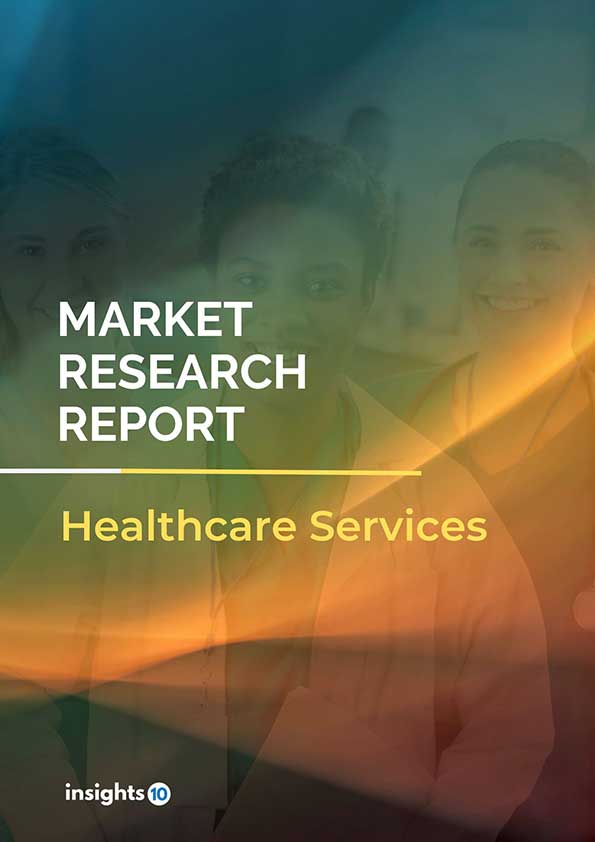APAC Blockchain Technology in Healthcare Market Analysis
This report presents a strategic analysis of the APAC Blockchain Technology in the Healthcare Market and a forecast for its development in the medium and long term. It provides a broad overview of the market dynamics, trends and insights, growth drivers and restraints, segmentation, competitive landscape, healthcare policies and regulatory framework, reimbursement scenario, challenges, and future outlook. This is one of the most comprehensive reports about the APAC Blockchain Technology in the Healthcare Market, offering unmatched value, accuracy, and expert insights.
Buy Now

APAC Blockchain Technology in Healthcare Market Executive Summary
The Asia-Pacific region, which includes more than 40 nations and is home to more than half of the world population which is 53% of the world's population lives in the Asia Pacific Region, which takes up 21% of the planet's land area, has a variety of distinct health systems. As a result, the residents of the Asia-Pacific area have a wide range of health statuses as a result of the region's different healthcare frameworks.
Some nations in the region are well-known for their excellent public health systems. When it comes to healthcare, Japan, Australia, and New Zealand all rank among the top Asia-Pacific nations, with health spending accounting for sizable portions of each nation's GDP. The strong economic rise in the APAC region comes with benefits and challenges for the healthcare industry. Despite the increased number of hospitals, people in rural and urban areas continue to face access and affordability challenges. Because people are living longer, there is an increased need for better healthcare, which leads to better health outcomes
Digital healthcare is developing globally as a result of IT technology development and the emergence of remote patient monitoring (RPM) solutions. RPM has developed into a useful tool for enhancing clinical assessment and decision-making while lowering the likelihood of hospitalization. With the prevalence of cancer, diabetes and cardiovascular diseases rising, RPM service use is also anticipated to rise. Additionally, as the aging population grows, more of them are choosing independent, healthy lifestyles, which will probably increase the adoption of RPM solutions.
The healthcare system stores and shares patient data between hospitals, diagnostic labs, pharmacy businesses, and clinicians using a blockchain network. Thanks to blockchain technology, which enhances the security, privacy, and interoperability of health data, the patient is at the center of the healthcare ecosystem. This technology presents a new model for health information exchanges by enhancing the performance, disintermediation, and security of electronic medical records (HIE).
Market Size and Key Findings
The APAC Blockchain Technology in Healthcare Market is estimated to be valued at US$ 40.92 Bn in 2021 and is expected to exhibit a CAGR of 41.3% over the forecast period (2021-2030).
APAC Blockchain Technology in Healthcare Market Size (In USD Bn) (2021-2030F)
.jpg)
Market Dynamics
Market Growth Drivers Analysis
It is anticipated that increasing disease prevalence would generate a vast amount of data, driving up demand for data management. Furthermore, applying blockchain technology to medical records will guarantee that the data is accurate and cannot be changed. The market is growing even more as a result of increased investment in this technology by key industry participants. For instance, IBM introduced a low-cost platform to create any blockchain applications in March 2018 that was designed specifically for startups. Such activities are likely to boost technological advancements and the adoption of new healthcare organisations, promoting market expansion
Leading healthcare organisations have teamed up to form the Synaptic Health Alliance, which is dedicated to increasing provider-to-provider data exchange. Established healthcare organisations like Humana, Quest Diagnostics, and Optum are part of the alliance. In several fields of healthcare, according to Synaptic, blockchain technology has the potential to improve efficiency and reduce costs
Competitive Landscape
Key Players
The prominent players operating in this market include IBM, PATIENTORY INC., Guardtime, iSolve, LLC, Solve.Care, Oracle, Change Healthcare, BurstIQ, Medicalchain SA, Blockpharma, etc.
1. Executive Summary
1.1 Digital Health Overview
1.2 Global Scenario
1.3 Country Overview
1.4 Healthcare Scenario in Country
1.5 Digital Health Policy in Country
1.6 Recent Developments in the Country
2. Market Size and Forecasting
2.1 Market Size (With Excel and Methodology)
2.2 Market Segmentation (Check all Segments in Segmentation Section)
3. Market Dynamics
3.1 Market Drivers
3.2 Market Restraints
4. Competitive Landscape
4.1 Major Market Share
4.2 Key Company Profile (Check all Companies in the Summary Section)
4.2.1 Company
4.2.1.1 Overview
4.2.1.2 Product Applications and Services
4.2.1.3 Recent Developments
4.2.1.4 Partnerships Ecosystem
4.2.1.5 Financials (Based on Availability)
5. Reimbursement Scenario
5.1 Reimbursement Regulation
5.2 Reimbursement Process for Diagnosis
5.3 Reimbursement Process for Treatment
6. Methodology and Scope
Blockchain Technology in Healthcare Market Segmentation
The Blockchain Technology in Healthcare Market is segmented as mentioned below:
By Network (Revenue, USD Billion):
- Private
- Public
- Others
By Applications (Revenue, USD Billion):
- Clinical Data Exchange & Interoperability
- Claims Adjudication & Billing
- Supply Chain Management
- Clinical Trials & eConsent
- Others
By End-use (Revenue, USD Billion):
- Providers
- Payers
- Biopharmaceutical & Medical Device Companies
- Others
Methodology for Database Creation
Our database offers a comprehensive list of healthcare centers, meticulously curated to provide detailed information on a wide range of specialties and services. It includes top-tier hospitals, clinics, and diagnostic facilities across 30 countries and 24 specialties, ensuring users can find the healthcare services they need.
Additionally, we provide a comprehensive list of Key Opinion Leaders (KOLs) based on your requirements. Our curated list captures various crucial aspects of the KOLs, offering more than just general information. Whether you're looking to boost brand awareness, drive engagement, or launch a new product, our extensive list of KOLs ensures you have the right experts by your side. Covering 30 countries and 36 specialties, our database guarantees access to the best KOLs in the healthcare industry, supporting strategic decisions and enhancing your initiatives.
How Do We Get It?
Our database is created and maintained through a combination of secondary and primary research methodologies.
1. Secondary Research
With many years of experience in the healthcare field, we have our own rich proprietary data from various past projects. This historical data serves as the foundation for our database. Our continuous process of gathering data involves:
- Analyzing historical proprietary data collected from multiple projects.
- Regularly updating our existing data sets with new findings and trends.
- Ensuring data consistency and accuracy through rigorous validation processes.
With extensive experience in the field, we have developed a proprietary GenAI-based technology that is uniquely tailored to our organization. This advanced technology enables us to scan a wide array of relevant information sources across the internet. Our data-gathering process includes:
- Searching through academic conferences, published research, citations, and social media platforms
- Collecting and compiling diverse data to build a comprehensive and detailed database
- Continuously updating our database with new information to ensure its relevance and accuracy
2. Primary Research
To complement and validate our secondary data, we engage in primary research through local tie-ups and partnerships. This process involves:
- Collaborating with local healthcare providers, hospitals, and clinics to gather real-time data.
- Conducting surveys, interviews, and field studies to collect fresh data directly from the source.
- Continuously refreshing our database to ensure that the information remains current and reliable.
- Validating secondary data through cross-referencing with primary data to ensure accuracy and relevance.
Combining Secondary and Primary Research
By integrating both secondary and primary research methodologies, we ensure that our database is comprehensive, accurate, and up-to-date. The combined process involves:
- Merging historical data from secondary research with real-time data from primary research.
- Conducting thorough data validation and cleansing to remove inconsistencies and errors.
- Organizing data into a structured format that is easily accessible and usable for various applications.
- Continuously monitoring and updating the database to reflect the latest developments and trends in the healthcare field.
Through this meticulous process, we create a final database tailored to each region and domain within the healthcare industry. This approach ensures that our clients receive reliable and relevant data, empowering them to make informed decisions and drive innovation in their respective fields.
To request a free sample copy of this report, please complete the form below.
We value your inquiry and offer free customization with every report to fulfil your exact research needs.








































